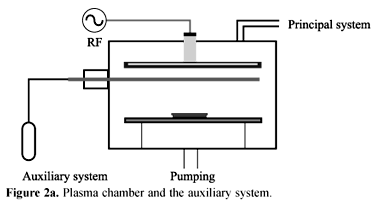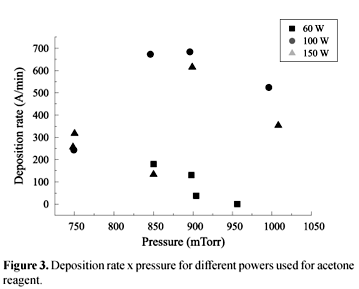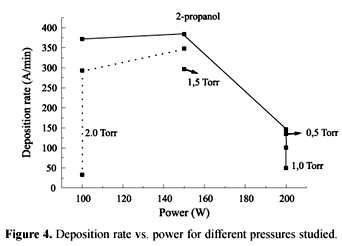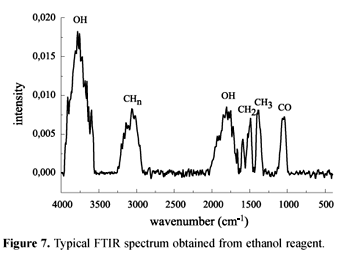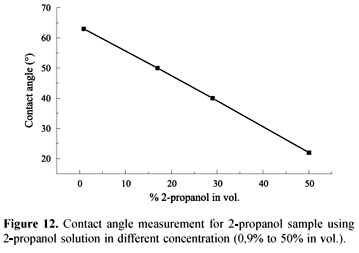This work was aimed at producing new polymeric materials using oxygenated organic compounds as main reactants and plasma enhanced chemical vapor deposition (PECVD) as a production technique. The films obtained were analyzed by profilometry, in order to determine the deposition rate, by Infrared Spectroscopy (FTIR) to identify the species deposited and by contact angle measurements to determine the polarity of the surface. For the reactants used, namely ethanol, acetone and 2-propanol, the plasma deposition process was least efficient with ethanol followed by acetone and 2-propanol. With the latter, reproducible thin films were obtained with a high deposition rate (up to 400 Å/min). These films had a high amount of OH and could be wetted by common organic solvents, such as 2-propanol or acetone. The contact angle formed by drops of 2-propanol or acetone aqueous solution on the film produced from 2-propanol varied significantly with the concentration, from 0.9% to 50% by vol., indicating that the film is sensitive to polar solutions.
Plasma; Polymerization and organic compounds


